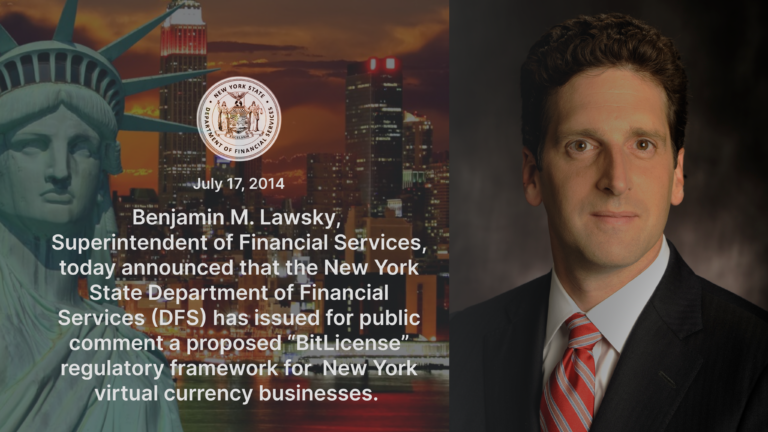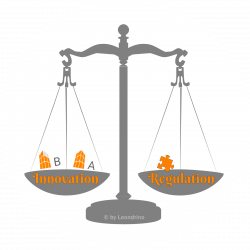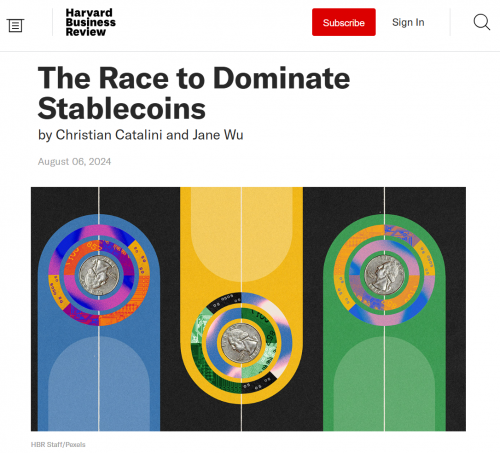By Peter Reuschel, Leondrino Co-Founder
Leondrino´s Corporate Currencies in the Upcoming Stablecoin War
When I proposed the idea of ‘Leondrino tokens’ as a feature of Leondra music in 2011, I faced significant challenges convincing the Leondra music team to issue private currencies for music bands and pivot the business model in this direction. At that time, I was the business angel supporting Leondra music, which was a platform designed to help musicians automate their business operations and build and develop their fanbase and rights portfolio. The team was skeptical about the possibility of new private issuers entering our financial system anytime soon. Most of my friends were also doubtful that the core innovation behind Bitcoin, which enables the transfer of value from one person to another via tokens along with the growing adaption of mobile phones and mobile payments in all parts of the world, would eventually lead to entirely new ways in which people, companies, and devices exchange goods and value, based on completely new organizational structures.

Throughout my life, I have consistently conceived and implemented ideas that were at least five to ten years ahead of their time. This foresight proved beneficial when I served as a corporate VC for SAP in Europe. However, this foresight proved costly twenty years ago when, as co-founder and CEO of InterComponentWare AG (ICW), I prematurely suggested that my investors scale ICW substantially faster. Back then, I advocated for the rapid deployment of our personal health record system, complete with tools to integrate data from general practitioners and hospitals. At that time, doctors, nurses, and particularly payers, with their traditional reimbursement procedures, were way behind in supporting such advancements at the speed that is needed based on the investment horizon of a VC-financed company. Based on my growth proposal at the time to the supervisory board and investors, we increased the burn rate too early, which inevitably led to tensions between founders and investors, with all their consequences. According to the law, there was a right to receive a health card and associated applications, including a digital patient record. However, at the time of the scaling decision, further prerequisites for ICW products were still missing, such as the question of physician compensation for data provision and telemedicine services.
Based on this tough learning with the ICW venture and influenced by the team of Leondra music, in 2011, we thus agreed to postpone the full shift towards the Leondrino concept and business model until at least the first bill concerning private issuers and administrators of ‘virtual currencies’ was under consideration in parliament. We also agreed early on that we want to cautiously and flexibly continue to develop in line with emerging regulations and market developments, including opportunities with pilot customer situations, without having to dilute our long-term vision due to investor pressure before the market has matured sufficiently. We were and are convinced that corporate currencies will be the real winners of the crypto revolution.
The first bill proposal came out and was discussed in the State of New York end of 2013. The so-called “BitLicense” framework, proposed by Benjamin Lawsky from the New York State Department of Financial Services (NYDFS), is a set of standards and regulatory requirements designed for businesses engaged in virtual currency activities within New York or with New York residents.

The scope of the BitLicense was what my team members were asking for: It was intended to apply to any business involved in virtual currency activities, including those who control, administer, or issue virtual currencies. This can encompass digital currency exchanges, wallet providers, and services that involve the exchange of cryptocurrencies for fiat currencies or other digital currencies. It even included already capital requirements to maintain certain levels of capital considered sufficient by the NYDFS to ensure the financial integrity of the entity. With its additional requirements regarding consumer protection, anti-money laundering, cybersecurity, compliance, and reporting it was a comprehensive framework. I was skeptical regarding barriers for us based on the expected burn rate, capital requirements, extensive paperwork, and compliant measures. But this framework convinced Sandra and Michael from the original Leondra music core team to jump on this new bandwagon without fear of doing something without an expected allowance to operate.
This BitLicense initiative was the reason for the founding of the company Leondrino and the opening of an office in New York City on November 7, 2014. From that day on, we accelerated our concept and product development. With the first significant revenues from corporate customers at the end of 2017, we also began hiring full-time employees. Until then, we primarily entered into contracts on a freelance basis.
Nevertheless, it took another 10 years since the founding of the Leondrino company until we got the final missing puzzle piece to realize the original vision completely – regulation for stablecoins. Stablecoins offer the benefits of DLT-based currencies without the volatility typically associated with a classical layer 1 cryptocurrency like Bitcoin and Ethereum. We had anticipated such a new legal term a long time ago when we were designing our standard Leondrino Lifecycle, which we published on our homepage in 2017 – but of course, could not know during that time what the final name for such a term might be. Therefore, we simply created the term “token class” to be flexible enough for the future.
The Standard Leondrino Lifecycle is divided into different phases and various Leondrino token classes from E to A, with each token class potentially represented by different legal terms based on the requirements in the target markets.

Not knowing when and through which steps fully tradable private currencies could be introduced to the market, we prepared two token classes for the more mature phase of the standard Lifecycle, namely B and A, which we believed would provide us enough flexibility to negotiate final details with the relevant regulator. It was unclear at that time which entity this would be especially in the U.S. with its competition of regulators.
2018, we had contacted BaFin – the sole regulator for the financial market in Germany – through our law firm and explained our Leondrino Lifecycle concept. End of December 2019, at the same time as the first national regulation for crypto custody was being decided in the German parliament, we received binding information from BaFin about our Leondrino tokens. Based on this information, we knew that our corporate customers who accept our Leondrino rules and standards and issue their token via the Leondrino licensee in Germany for the EU wouldn’t need an extra license for at least up to Leondrino token class C, which qualifies as utility tokens.
For the upper token classes B and A, there were still alternative interpretations, and it was already clear that a new EU-wide regulation was necessary for all kinds of crypto assets. With the MiCA regulation, which will be enforced on December 30, we can finetune our rules for the highest Leondrino token classes B and A. With its two versions of stablecoins – Asset-referenced Tokens (ARTs) and eMoney Tokens (EMT) – the MiCA regulation provides flexibility which we can use during this conceptual adaption process.
Moreover, we can now proceed with our execution plans for Leondrino of the highest token classes B and A in Europe and build the remaining parts of our platform. This includes the production environment for stablecoins and its necessary integrations to licensed exchanges. This is what our loyal pilot customers expect from us based on our previous predictions and announcements.
With large companies and corporate networks, we can now also start projects to prepare for the introduction of their stablecoins and prepare them for broad market deployment. With sufficient proof of the use of their corporate currency, these companies have the opportunity to move up to the highest Leondrino Token Class A, allowing them to take full advantage of their mature corporate currency.
Before the adoption of the MiCA regulation, corporations were still hesitant about concrete plans to introduce their corporate currency due to their risk-averse decision-making processes. However, we are now seeing indications from training requests by individual staff departments, such as corporate treasury, that the first corporations are seriously considering their corporate currency.
To gear up for serving major clients and to organize this next growth step, we are currently preparing for our A round. In parallel, we are intensifying the sales of our native token, the XLEO, which is still classified as token class C and offered with an attractive discount.

Finally, after 10 years of bootstrapping with a focus on a limited number of pilot customers and the support of loyal and patient angel investors, our venture is approaching the tornado phase. We are now ready to collaborate with VCs including corporate VCs from financial institutions and transition into fast-growth mode. Without the hard lesson learned about not growing too early, we wouldn’t have survived.
Leondrino Approach in the Race to Dominate Stablecoins
Christian Catalini and Jane Wu published an article about ‘The Race to Dominate Stablecoins‘ in the Harvard Business Review on August 8th. The article analyzes who might become the winner of the upcoming stablecoin wars.

Based on the conclusions of this article, we, the founding team of Leondrino, feel validated in our founding thesis that digital corporate currencies will be the winners of the cryptocurrency revolution.
With the tailwind of the MiCA regulation and based on the expected regulation in the U.S. after the next election, we have decided to leave the interim “stealth mode” behind us and emerge from the radar shadow to be recognized as a challenger in the next phases of the stablecoin race.
Leondrino’s approach to stablecoins is innovative and tailored for big brands and tech giants looking to issue their corporate currency. Here’s why Leondrino could be poised to win the stablecoin battle:
1. Brand-Specific Currencies and Their Diverse Applications: Leondrino’s unique selling proposition is its focus on brand-specific currencies of enterprises or networks of corporations. This allows companies to maintain control over their digital assets while leveraging Leondrino’s stablecoin infrastructure.
Moreover, corporate currencies enable a wide range of brand-specific applications around the upcoming convergence between payment and loyalty management. The resulting increase in efficiency in customer retention management is expected to be largely passed on to consumers, leading to an exponential growth of corporate currencies in the mass market.
2. Regulatory Compliance: Leondrino is designed to comply with existing regulations in different legal spheres via extra Leondrino licensees and its customizable services, providing a secure and legal framework for companies to issue their currencies. The regulatory compliance and the capability of multi-issuance in different jurisdictions are crucial for gaining the trust of companies, users, and regulators.
3. Multi-Currency Wallet (MCW) and Payment Function: The platform offers a multi-currency wallet, making it easy for users to manage various branded tokens in one place. This user-friendly approach could increase adoption rates among consumers. Payment is seen as more important for Leondrino than trading. Therefore, Leondrino has its own Leondrino Pay app but can be integrated via standard APIs with market-leading payment providers.
Leondrino´s MCW is prepared to include also other forms of tokenized money, such as Retail CBDC or CBMT if allowed by the issuing entities.
4. Currency Management-as-a-Service: Leondrino provides Currency Management-as-a-Service, which simplifies the process of issuing and managing digital currencies for enterprises. This service could be particularly attractive to companies without the expertise or resources to do this in-house.
5. Strategic Partnerships: The Leondrino team’s focus on partnerships with enterprises and SMEs across various industries, including retail, food, hospitality, and renewable energies, demonstrates its commitment to a broad application of its technology. Moreover, it is looking for leading financial institutions who become partners for its stablecoin infrastructure.
6. Financial Stability: Leondrino currencies are backed by the obligation of corporations to accept their branded currency in exchange for their goods and services, providing a stable foundation for these digital assets. Moreover, the standard capital requirements of Leondrino, especially for the mature phases of the Leondrino lifecycle in combination with the future role of the XLEO as bridge and reserve currency, will contribute to the financial stability of single corporate currencies and the whole Leondrino ecosystem.
XLEO is planned as an asset-referenced token in the highest Leondrino Token Class A. Reserves in national currencies (e.g., EUR and USD) for corporate tokens of the top Token Classes B and A will be primarily invested in the bridge and reserve currency XLEO for longer holding periods.
7. Innovation, Openess, and Flexibility: The platform’s ability and commitment
- to operate the highest Leondrino token classes on various blockchains,
- its commitment to openness and API which allows access of third-party services including wallets, apps of the brands, and mobile payment; and
- its commitment to innovation
position Leondrino as a flexible and forward-thinking partner for brands looking to enter the stablecoin space. Moreover, Leondrino is committed to supporting user-friendly interfaces and APIs not only for corporate currencies but also for retail CBDC and CBMT. It also includes openness for cooperation on using the planned Leondrino stablecoin infrastructure and openness to releasing Leondrino tokens on other qualifying DLT platforms.

In conclusion, Leondrino’s comprehensive platform strategy, which combines regulatory compliance, brand-specific focus with high application benefits in the respective brand universe, and a user-friendly wallet interface, positions Leondrino as a strong contender in the stablecoin market. For big brands and tech giants, partnering with Leondrino could offer a strategic advantage in issuing corporate currencies that are stable, compliant, and tailored to their specific needs. As the digital currency landscape continues to evolve dynamically, Leondrino’s role in shaping the future of corporate stablecoins will be a development that I obviously recommend watching.
